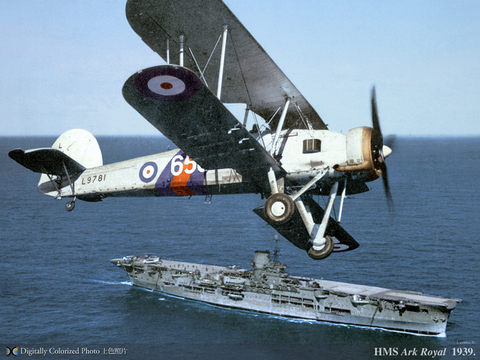LoBaron
Posts: 4776
Joined: 1/26/2003
From: Vienna, Austria
Status: offline

|
The Air Mission Coordination Guide v2.1
Ok first a big thanks to the input I received in reaction to my first Air Mission Coordination Guide
now buried somewhere in the general discussion!
It has really been a great help to make v2 and I hope that the new version explains many of the
experienced results compared to theory.
General comparision between Admirals Edition and original War in the Pacific strike coordination:
We all know that A2A has changed a great deal compared to WitP. Some of the "issues" with coordination we
notice is that there was a great change from stock to AE, but it is very difficult to appreciate those when we are looking
at the results from a WitP perspective.
Lets try to sort this out:
In stock there where two possible outcomes: either a strike went in coordinated, fighters protecting the bombers perfectly
with the CAP having to battle through the escorts to even reach a couple of bombers - or it didnīt and the bombers were torn apart.
The result was the massive air killing grounds those, that played the original WitP, knew so well.
Air battles with 3-500 participating planes, +50% AC losses, the side at disadvantage usually losing big-time.
What was unrealistic about this?
Well, imagine an airstrike of above mentioned size with 100īs of AC involved in WWII.
Only very crude radar, different fuel consumption, different cruise speeds, only basic radio procedures, dependency on weather (even a small
cloud formation could lead to AC formations not being able to rejoin the original position in the strike anymore), and all this
trying to hold together streched out over 10īs of square miles, without any chance for the lead formation to watch anything that happened
behind their backs or vice versa on a flight that sometimes took several hours!
Even under optimal conditions this attack would arrive in separate raids, one after another, sometimes coordinated, sometimes not.
Escorts would engage, often drawn away from bombers, rejoin formations after a pitched battle, or returning alone after battle damage,
CAP would sometimes get into a position to engage unprotected parts of the bomber formations, only to be jumped by the escorts the
next time the try the same.
All this would take place over an extended time, sometimes hours of A2A battles.
Look back at the original WitP: These battles would not happen that way. They would nearly always end in a big furball that decides the outcome
of the air war in a specific area in one day with brutal results for the side at disadvantage, which, in RL would have taken several weeks
to yield a comparable result.
Why are you talking so much about WitP when we want to know more about AE?
Well, I wanted to emphasise the big change that happened and why the "WitP veteran viewpoint" is simply the wrong way to look at the new A2A
system.
As described above, large strikes did not arrive on target at the same time. On nearly all occasions the strike arrived split up to different
raids that attacked the target and were long on the way home before the last elements of the strike even had visual on the target.
This is what AE tries to simulate. What we often view as lack of coordination is in fact the system trying to break up the attacks into
different packages, most of them as well coordinated as possible but some out of position, arriving earlier or later, and/or escorts out of position.
But they all represent the same (coordinated) strike. We can imagine this as different scenes of one big air battle.
Thats what we see in the combat reports when part of the strike gets ripped apart without escorts while another bulk of bombers reaches
target completely unscratched under fighter cover.
To summarize the above I again like to note that the seemingly uncoordinated attacks are so because that was implemented intentional
to reflect the difficulties faced when performing such a complex task in WWII and because it was a solution to prevent the Uber Air Combat
that so frequently happened in the old WitP!
2) Factors that influence strike coordination:
The cohesiveness of these raids and of the whole strike is influenced by many factors. If some of them go wrong thats often
enough that the strike results in bits-and-pieces attacks that get chewed up so nicely, but sometimes one good die roll and everything smoothes
out. Thats leads to a (IMHO very nice) factor that influences the results: less predictability compared to stock. Why? because its realistic.
A strike could have been planned to the last detail, but once the engines were running it was up to the strike commander, squad leaders,
wing commanders and single pilots to make it happen. Sometimes 1 guy screwing up and the result was a complete disaster.
Sometimes a weather front separated a perfectly coordinated strike and only some elements are able to rejoin.
The below factors can influence the strike cohesiveness, but be aware that they all work in both directions. So 6 good dice rolls and then
a bad one can lead to a bad result. On the other hand a good dice roll can negate some of the failed ones:
Also none of the factors dominate other factors per design.
- Plane type (B17s wonīt form up with SBDs, F4Fīs will have a hard time escorting B29s, no matter how hard you try)
- Cruise speed (see above)
- HQ
- Altitude coordination
- Weather
- Origin of attack
- Range to target
- Range between bombers and escort bases (or between different bomber bases or different escort bases)
- Leader stats and group EXP (every squadron counts, if one squadron leader f**** up this could have been it)
- Unit morale
- Whether escorts are closer to target than bombers or further away (closer is better)
- Extended range ops or normal range ops
Each of these factors can either lead to a beautiful coordinated strike or its exact opposite or something in between.
So mostly its the "something in between" we see.
Also, as you notice by looking at these factors, some can be influenced by the player on short notice while some canīt.
So basically the below list of examples is still valid when including all limitations mentioned above.
What the game tries to do is to coordinate missions based on altitude, range and target.
Lets start with a single base of origin and a single base as a target, base A and B.
1) Attacker has 1 fighter and 1 bomber squad at base A and wants to fly a coordinated attack on base B.
Thats the simple scenario that everyone should have guessed how to best coordinate: simply by setting the fighters to the same altitude as the bombers
(additionaly but not mandatory the fighter squad could be set to target B).
The game engine recognizes this and tries to coordinate the attack. Leadership, pilot experience and weather and a bad dice roll still can prevent coordination
but chances are high that the strike arrives on target at the same time as the escorting fighters.
2) Attacker has 2 fighter and 2 bomber squads at A and wants to attack B.
Now the player has a choice:
He could set all squads to the same altitude the game engine makes the same check as in 1) and tries to coordinate the strike. The chance of success is probably a bit
reduced because there are more squads (more leadership checks and other dice rolls involved) but most probably the 4 squads arrive at the same time over target.
On the other hand the player could do something different:
He can set 1 fighter and 1 bomber squad to, say, 10k alt and the other two to 11k.
Whats the result? The game engine makes the usual check on altitude and tries to plan 2 coordinated strikes, one with the first pair and one with the second.
Chances are high that the first bomber pack arrives with first escort and the second bomber pack with the second escort.
But the engine makes a second check: if all 4 squads have the same target selected there is a (reduced) chance that all 4 squadrons arrive on target but it
has a significantly lower chance than in the example above.
What is the advantage of the second choice?
Well, plain and simple the second way of doing things has a higher chance of coordination per strike, because the strike packages are smaller.
So theres is less chance that somewhere in the resolution phase a lonely bomber squad arrives on target completely without excort.
Its easier to coordinate 2 40 planes strikes than 1 80 plane strike!
3) Now we add a 3rd base, C, another enemy base. Lets say the distance to the bases is the same, so range doesnt matter.
The attacker wants wants to attack base B with an escorted strike and base C without escorts because he knows this base has no fighter cover.
Solution: He sets bomber squad 1 to 10k and targets base B, both fighter squadrons are set to without target selection 10k.
The second bomber squadron is set to 11k and base C as a target.
The game engine makes the altitude check and recognizes that bomber squadron 1 and both fighter squads want to get coordinated.
So chances are high that the result is an escorted attack on B and an unescorted on C.
4) This is the last one (phew) and the most comlicated but I just want to show what you can accomplish with strike coordination if used wisely:
The attacker has 3 Bases. A, B and C
The defender has 2 Bases, D and E
Base A and B are pure bomber bases, base C is a fighter base, closer to the frontline.
Lets say you want to make a coordinated strike on base D, which is heavily guarded, and E which is lightly guarded but needs the higher success rate (for whatever reason)
Number of squadrons is not of importance but please do not forget that the higher the number of squadrons/planes involved, the lower the chances that
every single strike gets coordinated.
First you could select with which bombers to attack which target base. You select all bombers on base A to attack base E and want some frome base B to join
the fun because the strike on E needs to hit home. The rest attacks base D
So:
Base A: select target E, select 10k for all base A bombers.
Base B: select 50% of the bombers to target base E and set them to 10k. Set the rest of the bombers to target base D
and set them to 12k.
Why? Because now comes the fighters. and you want them to escort exactly what you tell them to and leave no chances (or at least as few as possible).
As said before, base D is better guarded. Because of this set e.g. 70% of the fighters to 12k, split between sweep and escort mission however you desire
(and target base D but, again, you donīt have to because the coordination based on altitude could be enough)
Set the rest to 10k and also either escort or sweep.
What does the game engine do now? It again checks for alt coordination. It recognizes you want to coordinate a strike on base D with 50% of base B bombers
and 70% of base C fighters and tries to accomplish it.
It also recognizes you want to coordinate 100% base A bombers and 50% of base B bombers with 30% of base C fighters to attack base E and tries to accomplish
it.
If everything else goes well you get two beautifully coordinated strikes. There are many things that can go wrong but this way you maximize the chances.
The High altitude corner
High alt sweep was not, is not, and never will be an exploit.
In our PBEM we have no limits on maximum mission altitude except the one governed by the airframe.
If you experience severe losses due to an opponent flying at higher altitudes than you are able to, the reason
is that you are doing one or a combination of the below wrong:
- defending with too few numbers (its a numbers game, always)
- competing against a (historically) superior airframe without other qualitative or quantitative advantages to compensate
- neglecting the def skill for fighter pilots (big boo, guess what a pilot has to do in case he lost the initiative)
- not using layered CAP (different altitude settings for different squadrons)
- using planes at altitudes they were not designed for
Simply take a step back, reevaluate the situation and change accordingly.
We fight an air war on these very basic principles and get absolutely plausable and realistic results based on the odds.
A comment on sweeps in general
It was confirmed by the devs that sweep missions do not coordinate. The altitude coordination guide refers to bombing missions
and their assigned escorts.
This does NOT mean though that the time of arrival for sweep missions cannot be influenced!
Flight time is determined (besides time of launch) by cruise speed and rate of climb/mission altitude.
So you have tools to influence whether the sweep arrives when you want it to.
Doīs and dontīs:
- Select different altitudes for your strikes in one area. This is important. You are unneccesarily confusing the game engine if you donīt.
- Other missions that take place in the same area that do not need coordination for whatever resaon should also be set to unique altitudes
- Smaller strikers have much higher chances of coordination than a 250 plane I-want-to-dim-out-the-sun whacker. If you can accomplish something with low
numbers or expect high resistance its sometimes better to plan several smaller strikes on different altitude bands than a single big one which simply is
to large to get proper coordination and could lead to completely unescorted raids.
- Donīt forget that theres more factors involved: range to target, AC type, weather over origin and target bases, leadership value, pilot experience.
Adapt to those factors!
- Trying to attack a heavily guarded base from 4 directions, with 10 different plane types, without training, wrong leaders during a thunderstorm
and other missions set to the same altitude is the best way to improve the mood of your opponent.
- HQīs have an important part in the Air war, not only for total planes participating but also on better raid coordination
- When trying to coordinate an attack, donīt miss the fact that plane types and their respective cruise speeds have a huge impact
on wether the raid is cohesive or not.
- If you want fighters from another base to escort your strike, make sure that the base they are based on is closer to the target hex than the bombers.
- When planning long/extended range strikes assume that this increases the chance of uncoordinated attacks and plan accordingly.
- Plan your strikes as if they could go wrong, and not as if they must succeed in order to avoid a catastrophy. So, basically I am suggesting that
you plan low risk, as long as the outcome is in doubt.
This naturally does not apply to situations where you have to be creative because you are hopelessly outgunned or outnumbered or when you own
the skies anyway.
Please feel free to comment, please also not that what I wrote is a collection of information I found out about how the game engine treats
mission coordination, salted with much valuable input I received after I posted the first version.
I hope this helps on future mission planning and battle-outcome guessing or explaining.
Edit: Updated list of factors influencing coordination with Unit morale (thx SuluSea!), corrected some typos, got rid of one or the other "stock" and replaced by WitP, added/editerd a few doīs and dontīs.
< Message edited by LoBaron -- 4/14/2011 9:19:27 AM >
_____________________________
|
 Printable Version
Printable Version























 New Messages
New Messages No New Messages
No New Messages Hot Topic w/ New Messages
Hot Topic w/ New Messages Hot Topic w/o New Messages
Hot Topic w/o New Messages Locked w/ New Messages
Locked w/ New Messages Locked w/o New Messages
Locked w/o New Messages Post New Thread
Post New Thread